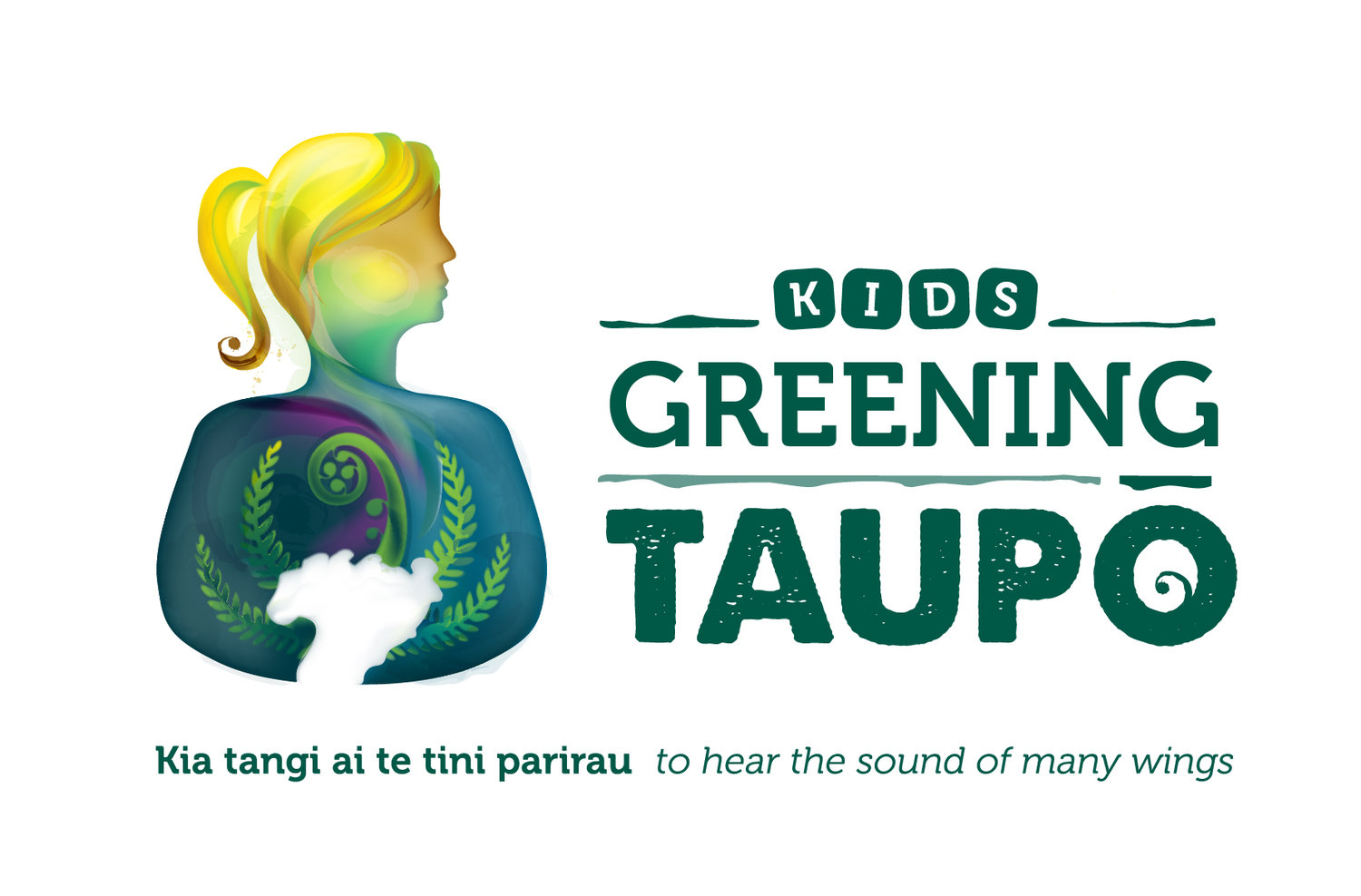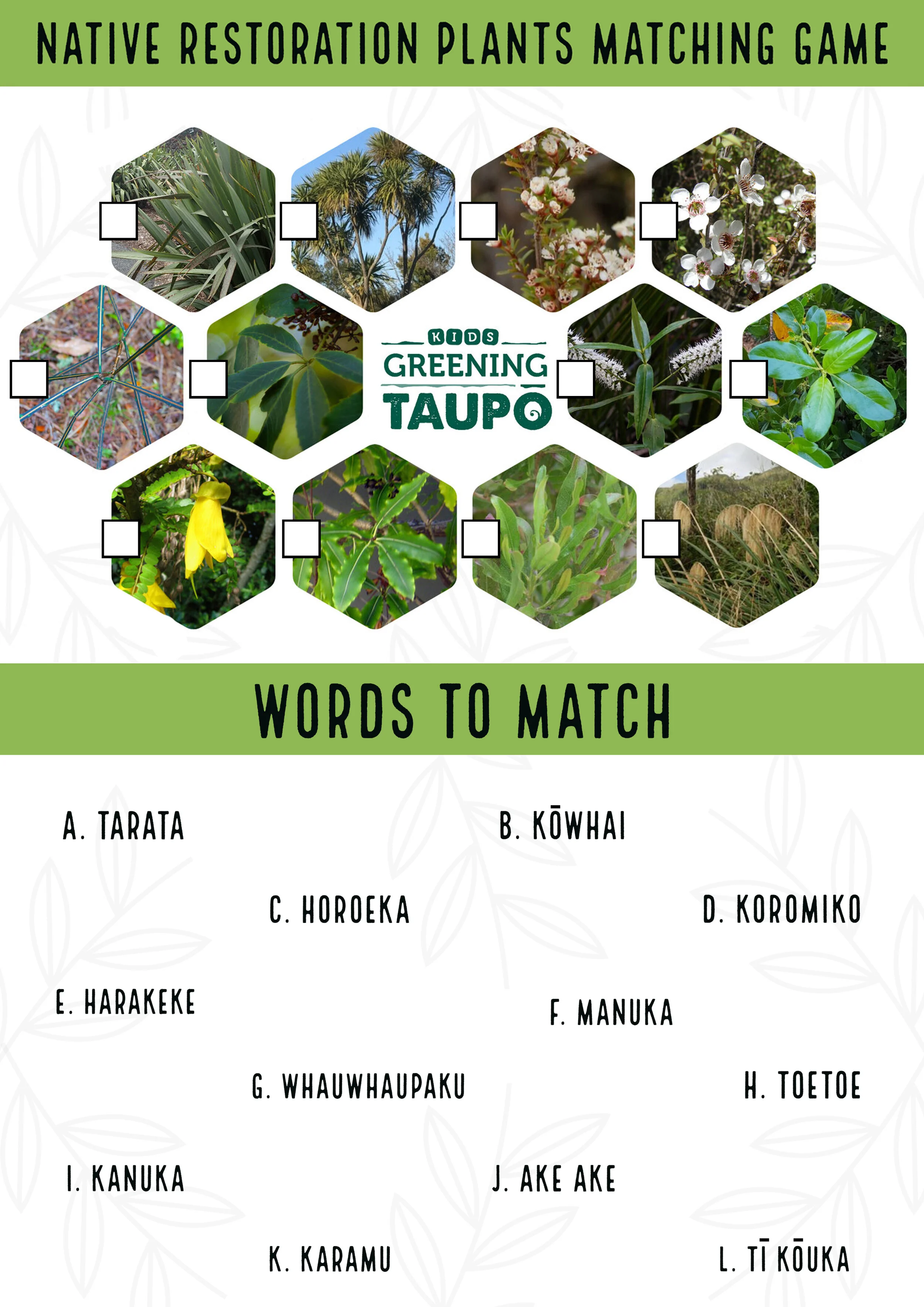Native Restoration Plants Matching Game
This restoration plant identification matching game has been created to back up your plant identification knowledge on the ground. Find our native plant cards here with information about each plant that can be printed to match to plants.
Can you tell mānuka from kānuka just by a photo? Mānuka has larger white flowers and seed pods than kānuka.
Be aware that Tī kōuka (cabbage trees) look a bit like a harakeke (flax) plant when young, they will take a few years to grow the trunk that we see the older ones with. This matching activity shows the adults so have a look for ‘harakeke on stilts’.
Young horoeka (lancewood) trees look very different to the older horoeka trees too. Look for the the long, thin, leaves! These were an adaption to protect them from moa. Once they are taller than the moa were, they change and become green leafy trees! How cool is that?!
Whauwhaupaku is also known as ‘5 finger’, as it often has 5 leaves (sometimes 6-7), like fingers of a hand, coming out from a point on the stem.
Akeake are very distinctive with their long thin leaves pointing straight up. You might find these in green or a purple/red colour.
There are lots of species of koromiko, some have different leaf shapes, and they may have white, purple, or pink flowers. The tips of the young leaves were used in rongoa to cure diarrhea and dysentery. The leaves are opposite each other.
Karamū (coprosma robusta) will usually have little pits (domatia), under the leaves on the sides of the large central vein. They have berries which are loved by birds. It is related to the coffee plant. Look for the shiny, oval leaves below.
Young toetoe plants look a bit like a tough grass. Some people refer to them as ‘cutty grass’. Be careful not to confuse our beautiful native toetoe with the terrible invasive pest species, pampas.
Tarata is also known as ‘lemonwood’. To check if the plant you find is tarata, break a leaf in half and smell it! If it has a lemon scent, then you’ve found tarata! In this sheet look for the wavy, light green/yellow leaf edges.
Kōwhai’s yellow flowers are loved by tui. The small leaflets are paired along each side of the stem and the bright yellow seeds are encased in a long pod.
You can also use the the iNaturalist app to help you identify the trees.
This matching game links directly to our Native Restoration Plants scavenger hunt HERE.
Answers to the matching activity HERE.

